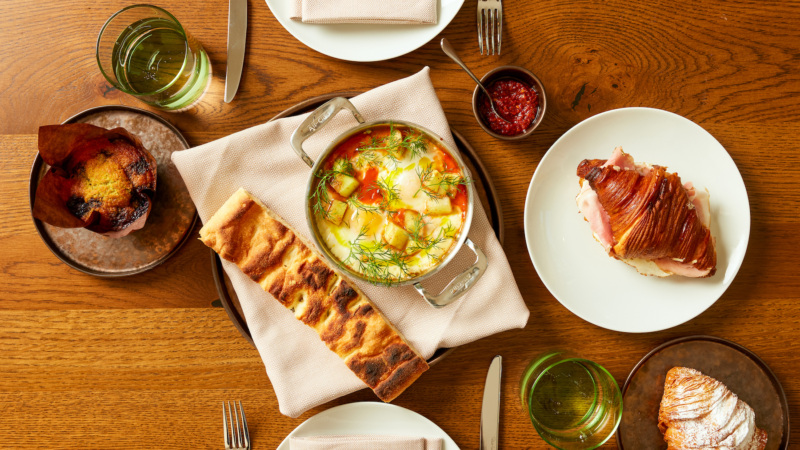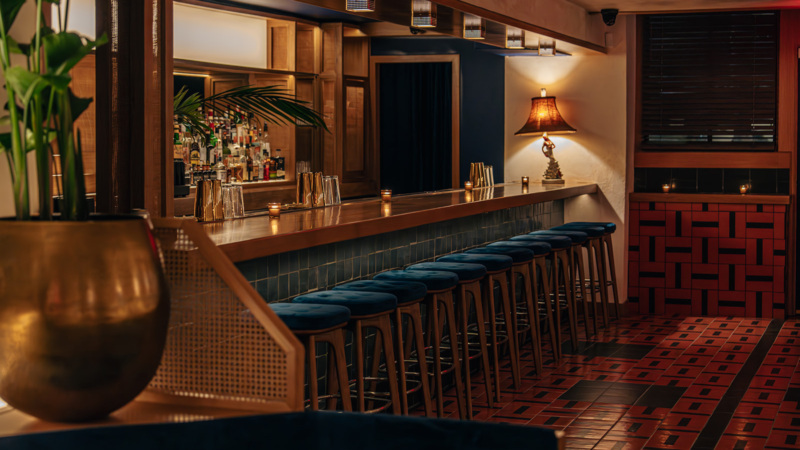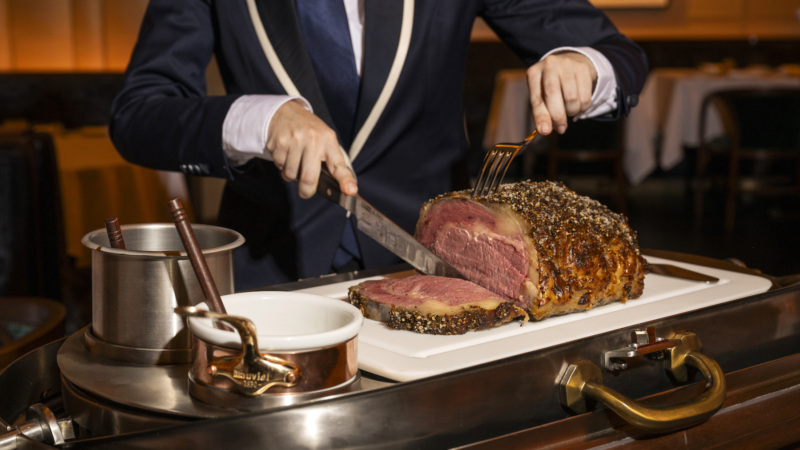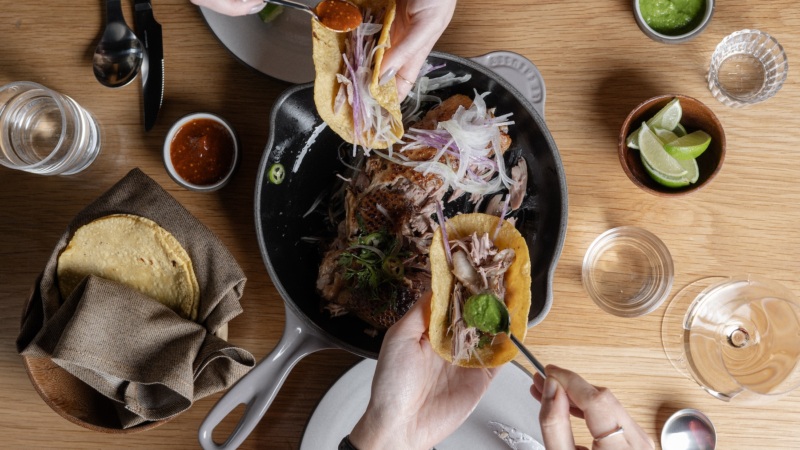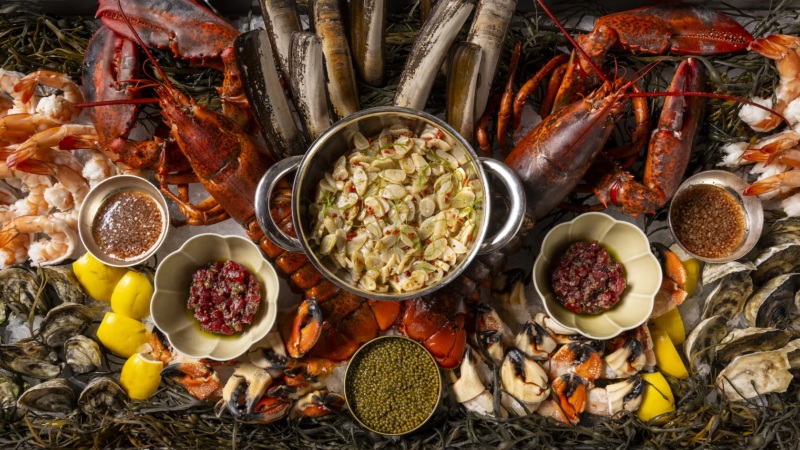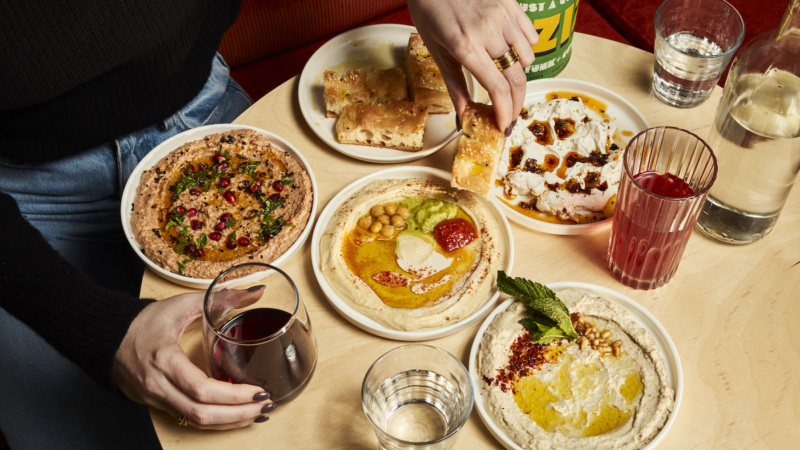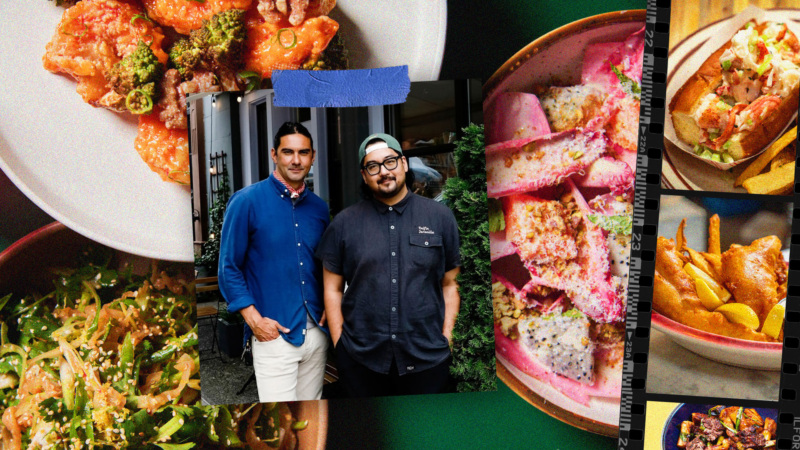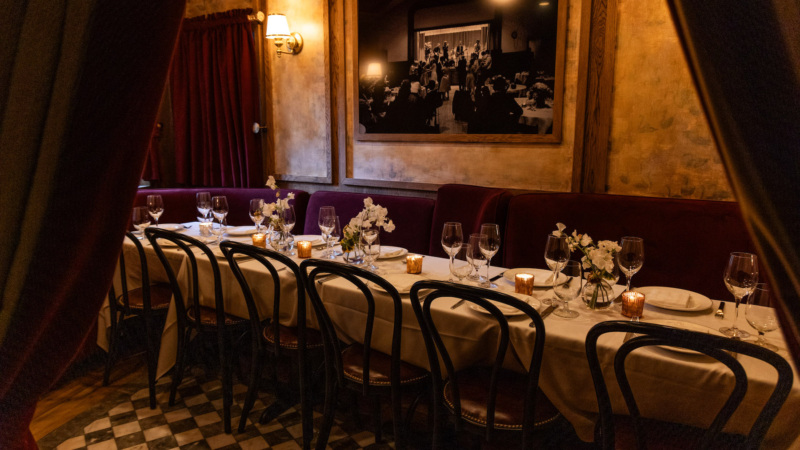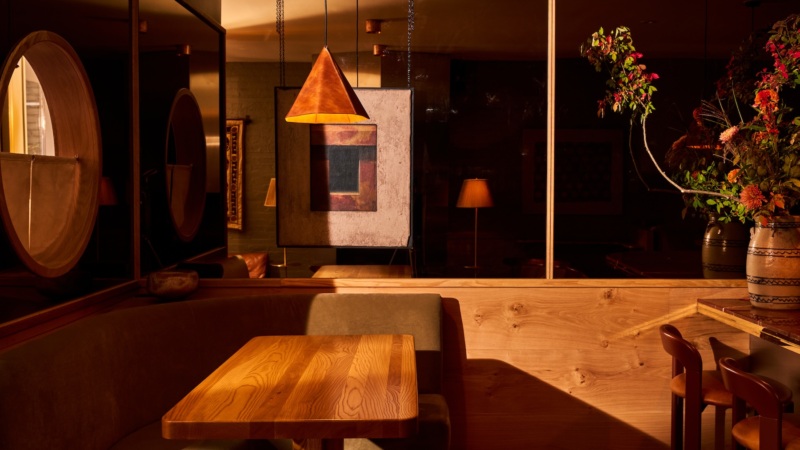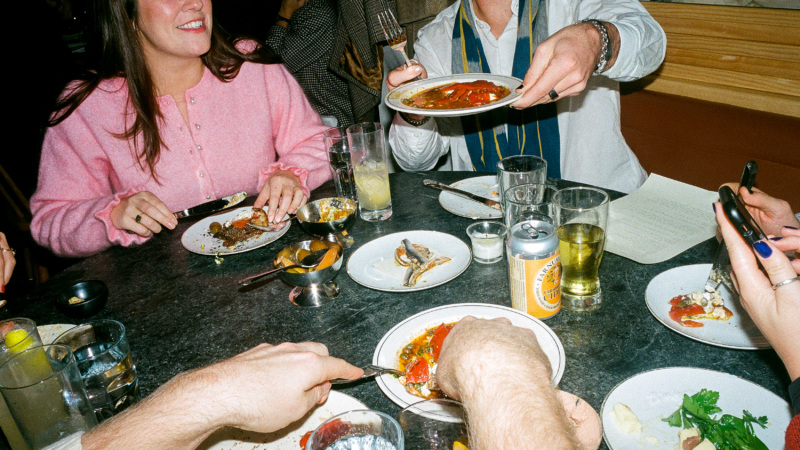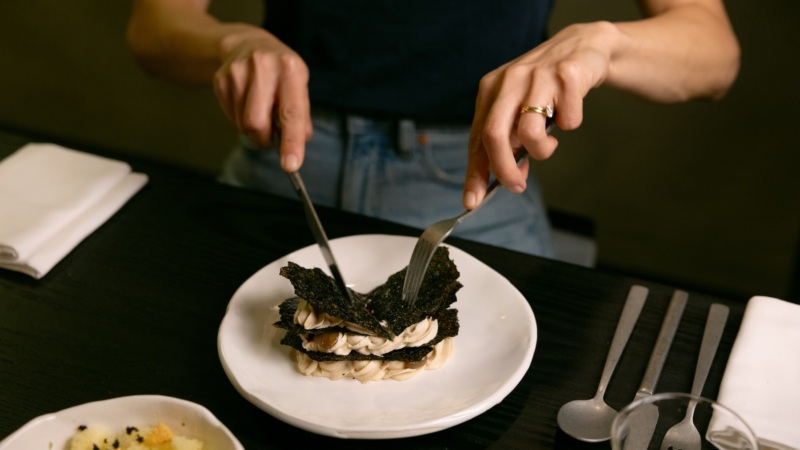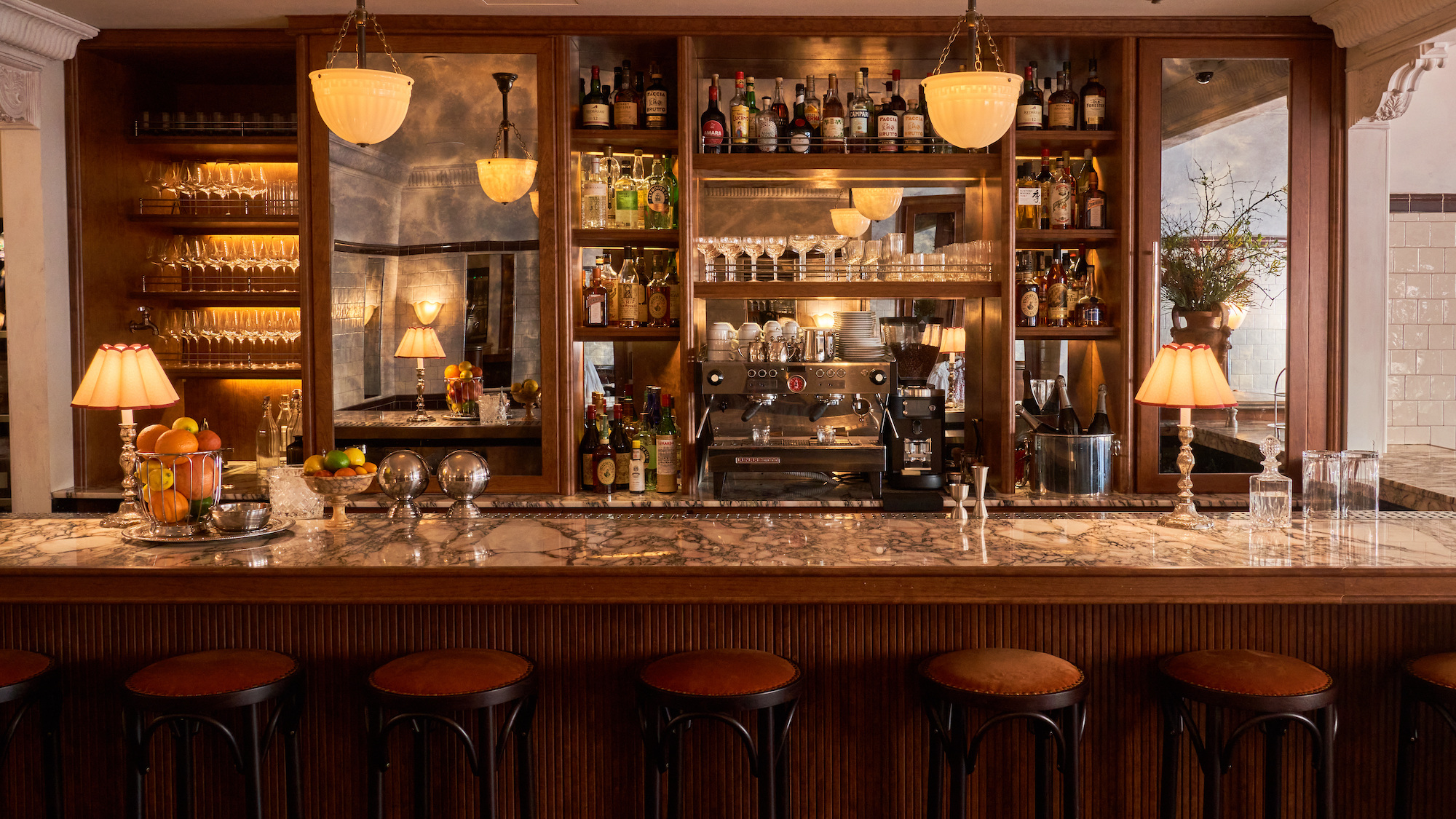
Raf’s Brings Renewal to a Storied Little Italy Address
The fate of a pair of 88-year-old brick ovens at 290 Elizabeth Street in Manhattan, the heart of Little Italy, has been something of an open mystery in the neighborhood for years. The vintage coal ovens, each roughly 14 feet deep and 10 feet wide, sit dormant behind a wall of white glazed brick in what was once, beginning in 1933, an Italian American bakery. More recently, Parisi Bakery, the beloved Italian hero shop, ran its wholesale bread production out of the space. But when Parisi moved out in 2021, the question wasn’t simply who would move in. What would they do with those iconic ovens?
As of March 2023, at least one of these ovens is roaring back to life as the centerpiece of Raf’s, a new all-day café and restaurant from the team behind The Musket Room, the award-winning fine-dining destination just down the street, and 290 Elizabeth’s new tenants. “It’s all about these ovens,” says Jennifer Vitagliano, one of the owners. “The hearth was the heartbeat; it was used to feed the neighborhood, which is something that we are trying to recreate.” Vitagliano co-owns Raf’s with The Musket Room’s executive chef Mary Attea, executive pastry chef Camari Mick, and her twin sister, Nicole Vitagliano.
Some research into the history of the space and the neighborhood uncovered that the twin ovens were built in 1935 by John and Angelina Bivona, Sicilian Americans who dreamed of making a livelihood out of crusty breads and crisp-bottomed pizzas. Their bakery was called Angie’s Italian French Bakery, though there wasn’t anything overtly French about it. Inspired by this history, and its accompanying nostalgia, the team at Raf’s is leaning into the idea of an Italian and French café. At a time when coastal Italian and neighborhood French bistros are prolific in the city, Raf’s has a more personal story to tell.
The restaurant shares its name with the Vitagliano sisters’ paternal grandmother, Rafaela Vitagliano (Nicole’s daughter is also named Raffi). Like the Bivona family that built the bakery decades ago, the Vitaglianos trace their family’s start in America to Little Italy. This was an opportunity to commemorate a bit of family history as well. “It was serendipitous,” says Jennifer. “This is a modern interpretation of the Italian roots of the space and our own roots.”
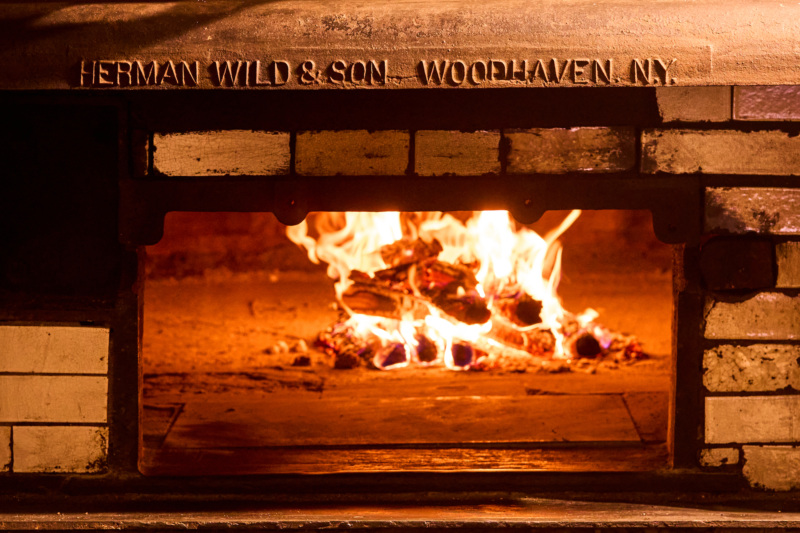

And there was no team more primed to bring it to life than Attea and Mick. Although their past three years have been tumultuous at the Musket Room, the duo ultimately found hard-won success — turning the restaurant into a vanguard in post-pandemic fine dining. Under Attea’s culinary direction, it retained its Michelin star status, and received a three-star review from The New York Times (its first review from the paper’s main critic). And both Attea and Mick have been recognized by the James Beard Foundation (the duo are semifinalists again this year). Opening Raf’s builds on that momentum — but also shows their versatility. “They’re honoring our history, but also what they want to be making,” Vitagliano says. “It’s our collective love letter to the city.”
Specifically, Raf’s presents an opportunity for the two chefs to flex totally different culinary muscles. Its menu is à la carte; at dinner, the selection is split into snacks and shareable appetizers, pastas, entrées from the hearth, and dessert. It will be a recognizable selection of Italian- and French-inspired dishes, such as beef tartare with aged Parmesan, escargot with whipped lardo, spaghetti with bottarga, and mussels in a saffron broth with sea urchin rouille. Contrast this with the Musket Room’s tasting menu, in which each dish is an entirely original, chef-driven creation. “I’ve loved developing my voice at The Musket Room, but it is such a specific creative voice,” Attea says. “It’s really exciting to start with things that already exist.” Of course, that oven will play a distinguishing role, making possible everything from a hefty dry-aged côte de bœuf for two to more delicate charred whole dorade. There is an attention to detail, not unlike that of Melissa Rodriguez at Mel’s, that is harder to capture with open-fire cooking.
Consider one recipe that has been in development for some time: the sfincione, a type of Sicilian pizza that bakeries in Little Italy might have been making in the 1930s. “We’re not a pizza restaurant by any means, but that’s the one direct reference to the history of the space,” says Jennifer. The thick focaccia-like crust resembles a quintessential Sicilian slice, but differs in its toppings (usually anchovies, onions, breadcrumbs, and sheep’s milk cheese). In fact, sfinione was likely a precursor to the contemporary Sicilian slice, which aptly fits the restaurant’s narrative thread of bridging past and present. At Raf’s, it will be based on Mick’s dough recipe, which she has been steadily perfecting for the last few months, along with an array of other baked goods.
Just as Attea is building her menu around at least somewhat familiar dishes, Mick is likewise moving away from her calling card of finessed, plated creations, instead taking the approach of known-but-fun desserts. “We’re keeping it simple,” says Mick. Since the restaurant doubles as an all-day café, and given the French half of the equation at Raf’s, Mick will be able to lean more on her French pastry background, showing off her versatility as a baker. There will be morning viennoiseries, freshly baked breads, and a slew of cookies, cakes, and pastries, such as Venetian cookies, Paris-Brest, and opera cake. Dinnertime desserts will skew more Italian, like a rich chocolate budino served in a glass.
None of which is to say that the classics leave no room to tinker. Take Mick’s version of canelé, a pastry from Bordeaux, in which she replaces the typical rum with anisette, an anise-flavored digestif that the Vitagliano sisters grew up making with their grandparents. This follows a wider trend of chefs across the city opening modern takes on European café culture, from Lodi and Corner Bar in Manhattan to Agi’s Counter in Brooklyn. “A newer generation is redefining what the classics could mean, and do mean, to us,” Mick says.
Like these other neo-cafés, Raf’s interior design is tastefully traditional, splitting that difference between bistro and Elizabeth St. social club. The upfront area is anchored by an oversized marble bar with distressed mirrors, small wooden tables inlaid with stone, and a few well-placed cozy banquettes — not to mention Mick’s gem of a pastry case. Midway through the space is a more formal but still elegant dining room, where tables are dressed with crisp imported Italian linens and softly lit by the Venetian glass and brass chandeliers overhead. The room can seat just over 30 guests, which will keep things intimate. At first, it will be dinner service only. The bakery, sit-down breakfast and lunch will start later this year.
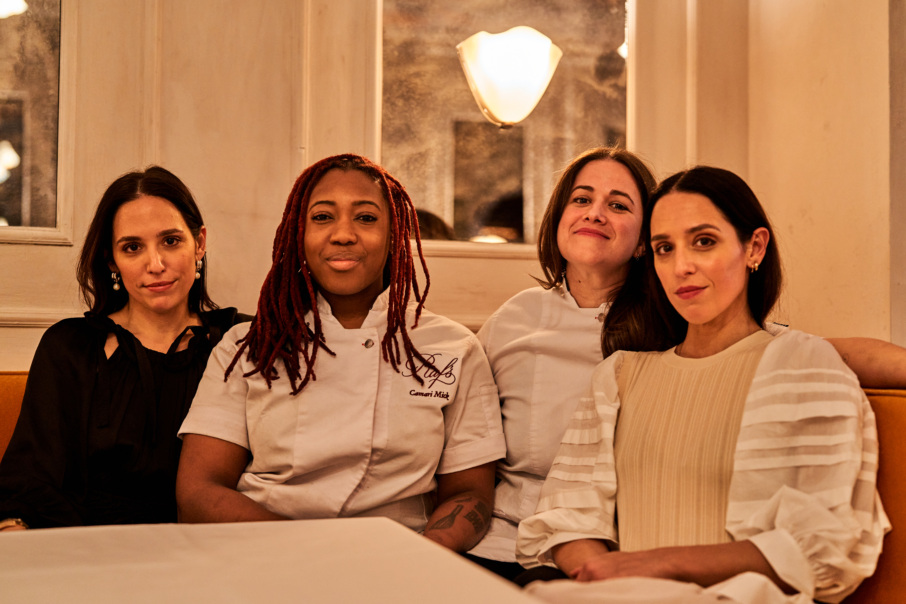
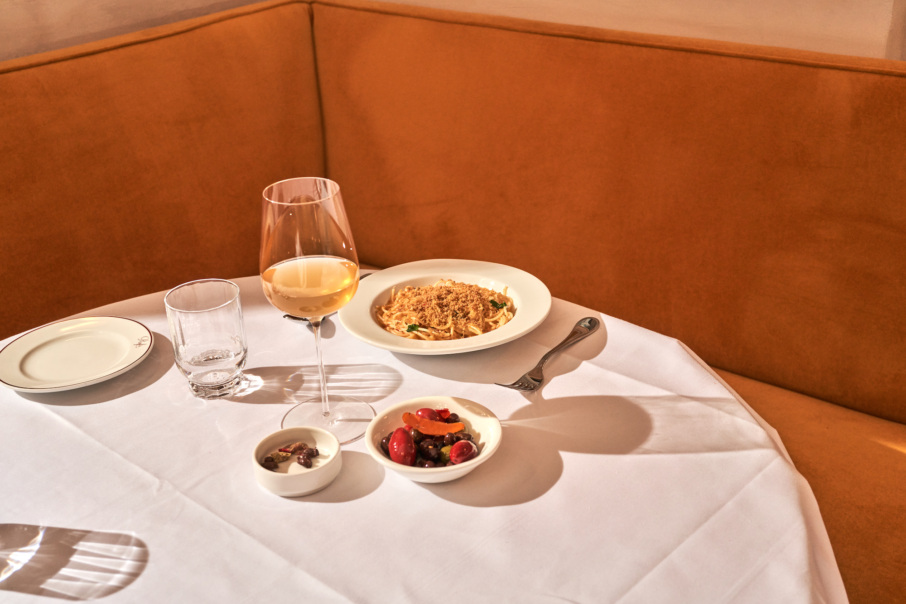
A newer generation is redefining what the classics could mean, and do mean, to us.— Camari Mick, Partner in Raf’s
As with The Musket Room, but more pointedly taking a cue from Angie’s, and even Parisi Bakery, the goal at Raf’s is to give the neighborhood, which is overrun with boutiques and transient shoppers, a place to gather over good food. In its own way, Raf’s will be the everyday haunt, the place that builds community in a way that fine dining necessarily can’t. “My hope is that Raf’s becomes a mainstay, somewhere I can get coffee in the morning, bring my daughter and have a five o’clock dinner, but also have birthday celebrations and late nights with friends,” says Nicole Vitagliano.
In other words, no matter what time of day it is, the oven in the back of the room will always be lit, or at least smoldering (as a vestibule for heat, the oven can’t really be turned off; and given its size, it would literally take days to reheat). Mick, for one, is clear-eyed about the significance of inheriting these ovens in this kitchen: “I hope we are able to continue on the legacy.”
Mahira Rivers is a restaurant critic and writer based in New York, and Resy’s dining columnist. In addition to spending five years as an anonymous inspector for The Michelin Guides, her writing has been published in The New York Times, New York Magazine, Food & Wine, GQ and elsewhere, and recognized by the James Beard Foundation. Follow her on Twitter and Instagram. Follow Resy, too.











